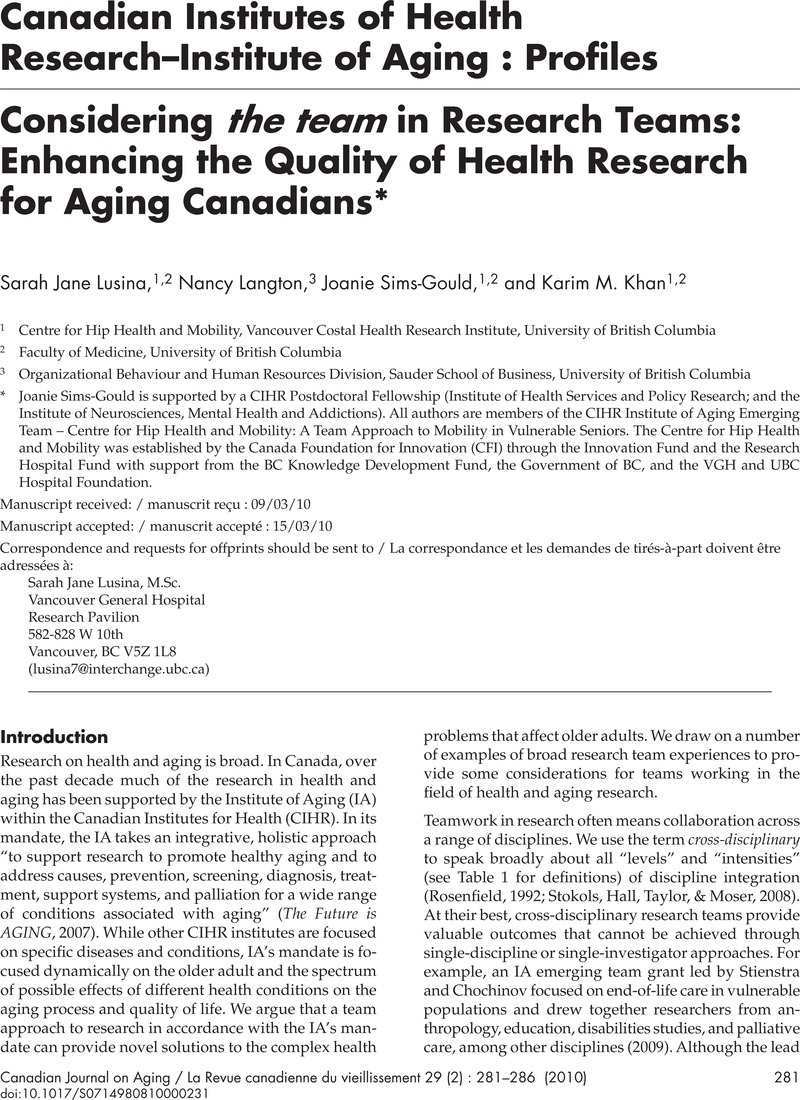No CrossRef data available.
Article contents
Considering the team in Research Teams: Enhancing the Quality of Health Research for Aging Canadians*
Published online by Cambridge University Press: 07 May 2010
Abstract

- Type
- Canadian Institutes of Health Research–Institute of Aging: Profiles/Instituts canadiens de recherche en santé du Canada–Institut du vieillissement : Profils
- Information
- Canadian Journal on Aging / La Revue canadienne du vieillissement , Volume 29 , Issue 2 , June 2010 , pp. 281 - 286
- Copyright
- Copyright © Canadian Association on Gerontology 2010
Footnotes
Joanie Sims-Gould is supported by a CIHR Postdoctoral Fellowship (Institute of Health Services and Policy Research; and the Institute of Neurosciences, Mental Health and Addictions). All authors are members of the CIHR Institute of Aging Emerging Team – Centre for Hip Health and Mobility: A Team Approach to Mobility in Vulnerable Seniors. The Centre for Hip Health and Mobility was established by the Canada Foundation for Innovation (CFI) through the Innovation Fund and the Research Hospital Fund with support from the BC Knowledge Development Fund, the Government of BC, and the VGH and UBC Hospital Foundation.




